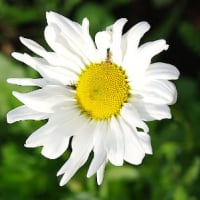This Forum will close on Wednesday 27 March, 2024. Please refer to the announcement on the Discussions page for further detail.
How to grow Rudbeckia
 Simone_in_Wiltshire
Posts: 1,073
Simone_in_Wiltshire
Posts: 1,073
I tried it last year and failed, and it looks like I will fail this year, too. My plan to grow Rudbeckia Goldsturm seems to have no luck.
What I do is:
I have clean plastic growing pots, I fill them with Jack Magic compost soil as this will be the soil that I mix with our heavy clay soil, I water everything, sow the seeds 0.5 mm deep (1/5 of an inch) and sprinkle some soil on it and press slightly. Then they are stored on the south facing living room window. No cover this year. I had covered them last year.
Result Not one single seed made it so far after 4 weeks.
I checked the forum, but I found only entries about the intention to sow Rudbeckia, but no entry that described what to do to turn it into a success.
It would be great if you shared your methods with me.
Many thanks in advance.
The other seeds that I have sown so far:
Echinacea from the GW February issue which show 5 little plants, my own Echinacea but only 1 decided to to turn into a plant. The Dahlias from the GW issue come great.
Some other plants which partly worked fine and are now in the greenhouse. The Marigolds from self-collected seeds last year grow fine, and they seem to be beginner-friendly.
My old tomato seeds didn't do well, so I opened the new package and some of them are now coming out. But I have the impression that this year is not good for tomato seeds.
The chillies are doing well.
On the other side, the bulb plants in the garden are growing like crazy this year.
What I do is:
I have clean plastic growing pots, I fill them with Jack Magic compost soil as this will be the soil that I mix with our heavy clay soil, I water everything, sow the seeds 0.5 mm deep (1/5 of an inch) and sprinkle some soil on it and press slightly. Then they are stored on the south facing living room window. No cover this year. I had covered them last year.
Result Not one single seed made it so far after 4 weeks.
I checked the forum, but I found only entries about the intention to sow Rudbeckia, but no entry that described what to do to turn it into a success.
It would be great if you shared your methods with me.
Many thanks in advance.
The other seeds that I have sown so far:
Echinacea from the GW February issue which show 5 little plants, my own Echinacea but only 1 decided to to turn into a plant. The Dahlias from the GW issue come great.
Some other plants which partly worked fine and are now in the greenhouse. The Marigolds from self-collected seeds last year grow fine, and they seem to be beginner-friendly.
My old tomato seeds didn't do well, so I opened the new package and some of them are now coming out. But I have the impression that this year is not good for tomato seeds.
The chillies are doing well.
On the other side, the bulb plants in the garden are growing like crazy this year.
I ♥ my garden.
0
Posts
Yes, I have used farm manure in Winter, and have now bought a wooden compost bin to get the leaves and soil mixed for next year.
Background: When we bought our flat, the garden (10x10 metres, but only 6x6 can be used for planting) was in a total weedy mess (usual story). The first year in 2016, I had two small beds and lawn. I had a compost heap in the sunniest corner and turned left-over clay soil together with rotten leaves into nice soil over the following years and used it. But I have nothing left now, just a new pile of start-to-rotten leaves, but I don't have brown matter.
It turned out over the years that our local area is plagued by creeping cinquefoil. Last summer, I decided to take off the lawn in Autumn and to dig out each single cinquefoil root. (Our garden clearance guy later asked if I want to work for him when he saw what I had done in a few days time). I said to myself that if the cinquefoil grows again, it's easier to remove a plant and to dig it out than having a lawn again.
I had to give the first year a start and bought farm manure in winter and forked it in. The few bags of soil were needed to fill the area were I planted bushes to avoid any cinquefoil and for pots. But with my new compost, I now can bin all the green stuff and leaves and turn it into soil. From next year on, no more new soil.
I ♥ my garden.
I use like @Buttercupdays has suggested, cardboard and toilet roll centres for brown material. I also have a friend who has a rabbit so I get used rabbit bedding pretty regular too.
I have put Echinacea seeds in, in the past week. I understand germination can be rather slow for them. How long did yours take to come through?
I ♥ my garden.